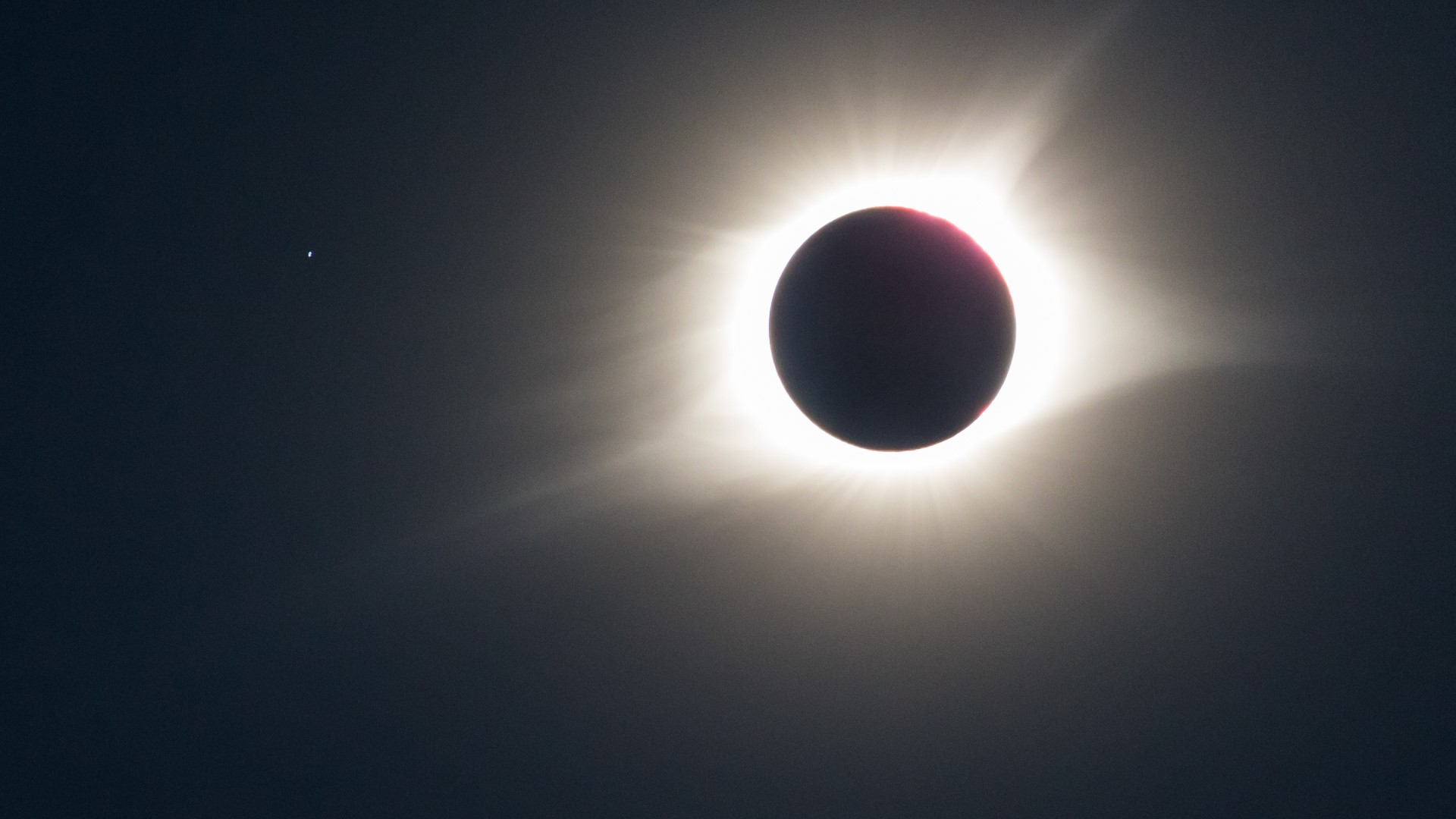WASHINGTON, USA — Although Washington state was not in the path of totality of the solar eclipse, the moon still covered a portion of the sun. How much depended on where you live.
A solar eclipse happens when the moon passes between the sun and the earth, blocking some or all of the light cast on the earth's surface for a brief period of time.
The center of the shadow that the moon casts on the earth's surface (places where the sun's light is completely blocked) can be relatively small, sometimes only 50 miles wide, according to NASA. As the moon, the sun and the earth all move, the center of the shadow travels across the earth's surface, creating what scientists call the path of totality.
However the partial shadow can span thousands of miles to the east and west of the path of totality. For this eclipse, all of North and Central America was able to see at least a partial eclipse, according to Space.com.
Here's how much of the eclipse people were able to experience depending on where they live in Washington state, according to TimeandDate.com:
- Seattle: 20.02%
- Tacoma: 20.37%
- Everett: 19.77%
- Port Angeles: 18.07%
- Spokane: 26.71%
- Pullman: 28.49%
In Seattle, the partial eclipse began at 10:29 a.m. and lasted until 12:21 p.m.
The path of totality stretched from Central America to Canada, passing through Texas, Oklahoma, Arkansas, Missouri, Illinois, Kentucky, Indiana, Ohio, Pennsylvania, New York, Vermont, New Hampshire and Maine.
How to observe the eclipse safely
Even when some of the sun's light is blocked by the moon, it is never safe to look directly at it.
For those who would like to observe the eclipse, people can purchase eclipse glasses, which are available online and in some retail stores.
People can also make homemade pinhole projectors.
NASA's Jet Propulsion Laboratory has provided a step-by-step guide for how to make one.

